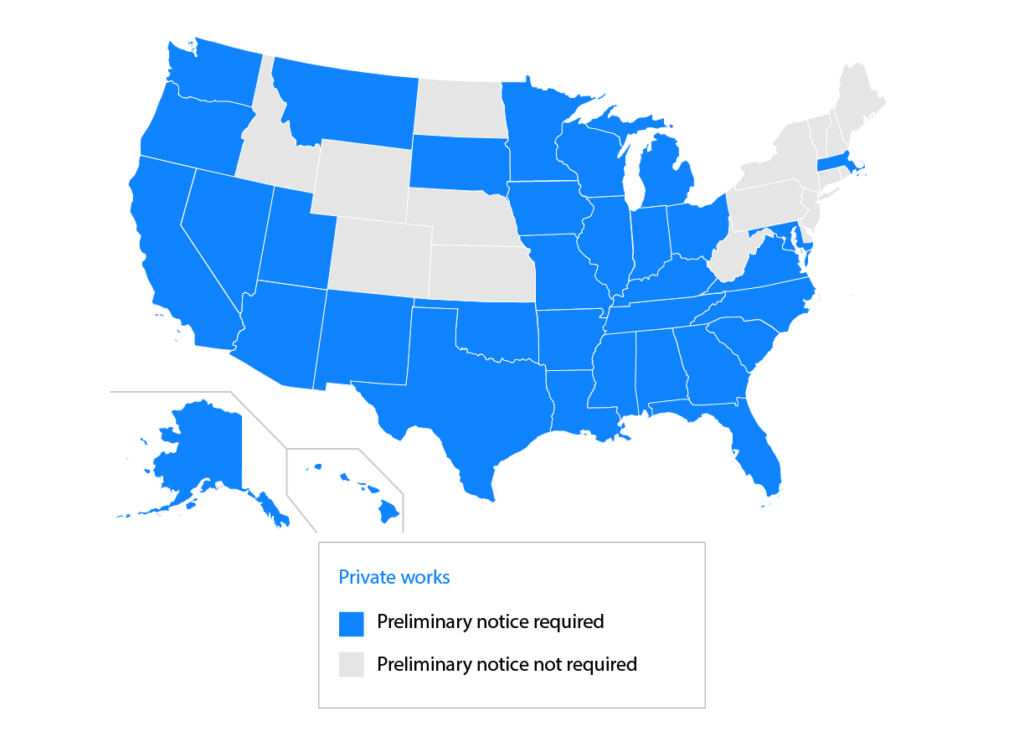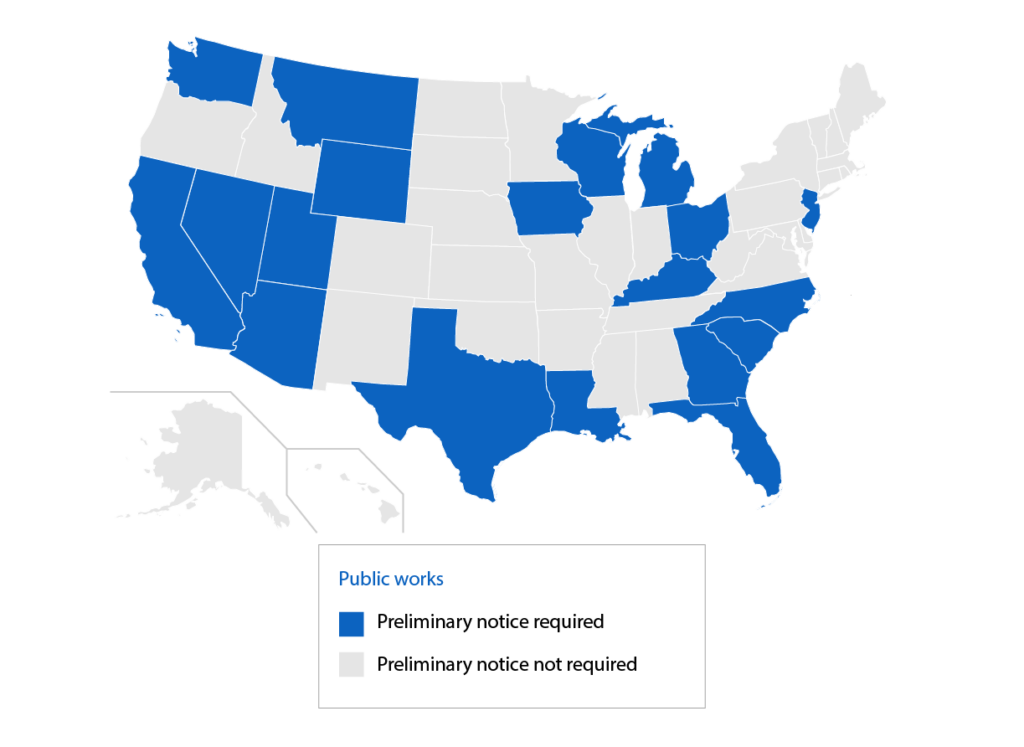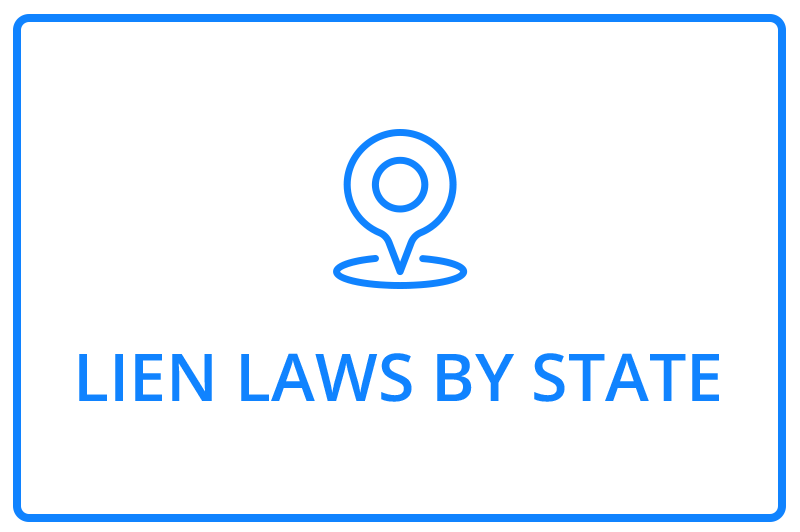What is a Preliminary Notice?
This notice isn’t a mechanics lien or bond claim, nor is it a notice of intent to file a lien. It’s just letting the necessary parties know that you’re now working on the construction project. In many ways, its step one for getting your claim paid in the event you do need to file a mechanics lien or bond claim, but it has to be done before you know you’re going to have a payment issue. If you don’t follow a state’s preliminary notice requirements, you may not be qualified to file a lien or claim if an issue arises.
Property owners and general contractors like to receive preliminary notices because it helps them track exactly who is working on a project and how much they expect to be paid for their work. It helps the general contractor manage project security as well. Subcontractors who send their notices, in general, find they are paid more quickly than when they don’t send a notice.

How to Send a Preliminary Notice
In states where sending a preliminary notice is required, sending and receiving notice is common practice. If you’re qualified to file a mechanics lien, whether you’re furnishing labor or material to a construction project, you probably want to send a notice in these states. The property owners and contractors will be expecting to receive a notice from you.
Generally, preliminary notices are sent by certified mail with return receipt requested or by registered mail. Make sure to keep a copy of the notice and the return receipt so that if you do need to file a claim, you have the documentation you need to show you complied with the state’s procedure.
There’s a lot of work that goes into researching notice requirements, making sure your notice has the correct information, getting it properly mailed, keeping track of notices, and tracking whether a project has paid or not. You may have someone in house who can handle all this or you may want to reach out for some professional help. If you need any help or guidance, reach out to the team at National Lien and Bond. They can help you comply with the state’s rules or manage the whole process for you.

WHY CHOOSE NLB?
WE GET YOU PAID!
Learn More About Mechanics Lien Compliance by State
Gain Access to Our Nationwide Mechanics Lien Construction Lawyers Network
Stay Updated On Legal Compliance Changes in Your State
Bond claims are generally used when you’re working on a government construction project. This could be a project for your local municipality or when you’re doing work at the state level. When working on these types of projects, your payment is generally ensured through a bond, so instead of filing a mechanics lien, you file a bond claim.

WHAT IS A BOND CLAIM?
In many ways, bond claims are similar to mechanics liens. They’re used by contractors and materials suppliers to construction projects, are fairly inexpensive to file, and tend to be very effective. A surety company, usually an insurance company that deals in bonds, is responsible for paying for the project in the event the responsible party does not, so there is a strong incentive to make sure you get paid.
WHAT IS THE DIFFERENCE BETWEEN A BOND CLAIM AND A MECHANICS LIEN?

“These are most common when working with governments and public projects. It provides a way to ensure subcontractors can be paid without having to file a lien against government property or a lawsuit against the government. “
THE PROCESS
File Your Bond Claim:
You start by filing your bond claim. While this sounds simple, there are a number of complex requirements that vary from state to state. You have to comply with each of these requirements in order to make sure your claim is correct and can be enforced. States also have different timelines that cover when the bond claim is due and where they need to be filed.
Submit Your Backup Materials:
When you file a bond claim, the surety company will probably want to see some sort of proof of outstanding payment and collect a sworn statement from you. You’ll need to gather this material for the company quickly to keep your claim moving forward.
Follow-up
Once you’ve filed your information, the surety company will then reach out their customer to notify them of your claim. They’ll request information about your work and claim and try to see if the problem can be resolved. This is often where the process slows down, so be sure to follow up with the surety company regularly and encourage them to approve your claim.
Enforce Your Claim:
If your claim is denied or payment is taking an unreasonable amount of time, you need to start thinking about filing a lawsuit against the surety company. While this is a last step and will certainly cost you more out of pocket, it will certainly get their attention.



NLB'S PROCESS
WHY CHOOSE NLB?
WE GET YOU PAID!
Learn More About Mechanics Lien Compliance by State
Gain Access to Our Nationwide Mechanics Lien Construction Lawyers Network
Stay Updated On Legal Compliance Changes in Your State




